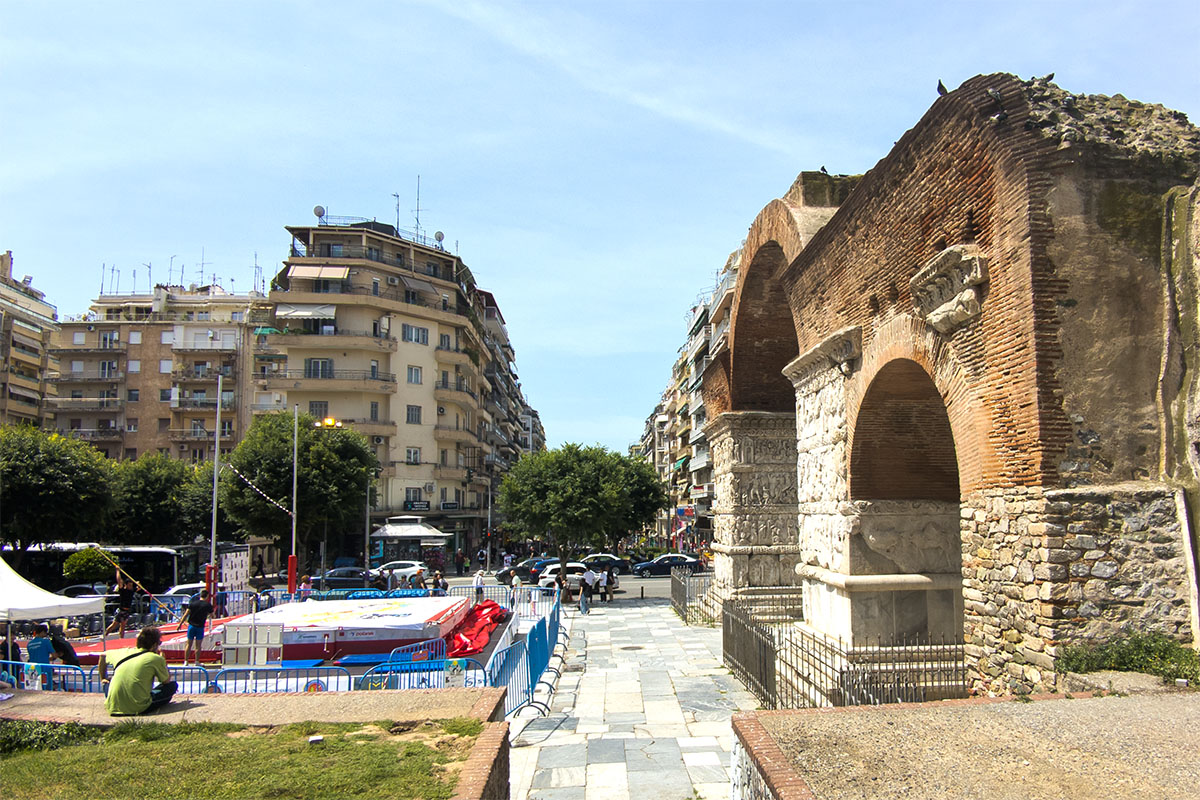Kamara isn’t just a Roman relic—it’s where Thessaloniki’s history and everyday life overlap. From student meetups to the city’s busiest crossroads, the Arch of Galerius remains a gathering point and a silent witness to centuries of change. Here’s why Kamara is more than a monument—it’s part of the city’s pulse.
If you’ve just moved to Thessaloniki, there’s a good chance your first meeting spot was Kamara. It’s the city’s unofficial welcome mat—especially for out-of-town students and young people figuring out their new routines. Just say “Let’s meet at Kamara,” and everyone knows the spot. It’s where plans start, directions end, and you don’t need to explain twice.
I did too. When I first arrived, I ended up there, standing under the arch with a coffee, trying to act like I knew where I was going. Within days, Kamara became a habit. The place to wait for someone, catch your breath, or watch the city move.
It sits right on the sidewalk, a few steps from the street, surrounded by the constant hum of scooters, buses, and people. There’s a fence now, but it wasn’t always there. You used to be able to walk right up, touch the marble, and sit on the base. The barrier helps preserve what’s left, but it also adds a bit of distance. Still, the arch doesn’t feel closed off—it’s part of the street, part of the pace of everyday life.
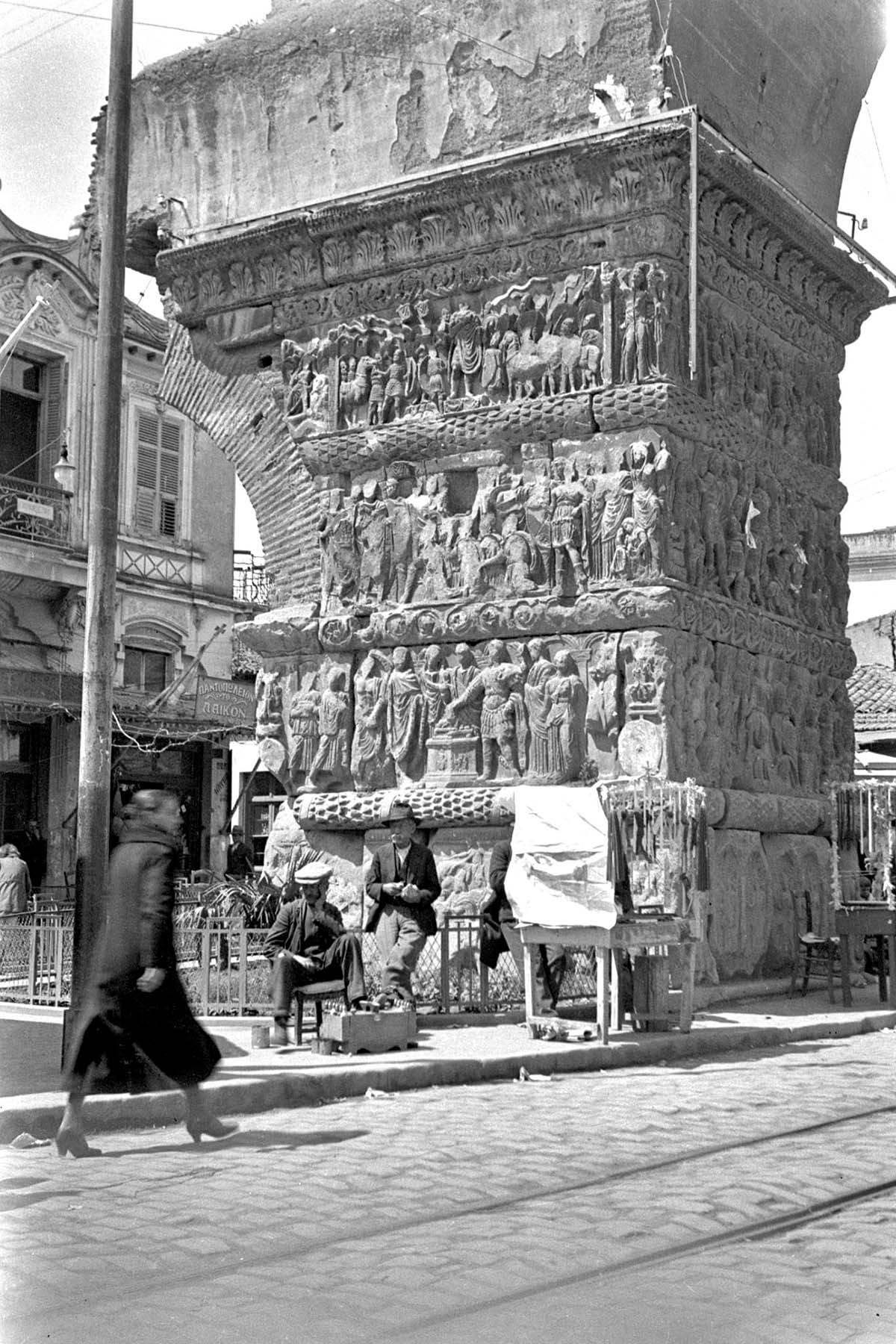
Its real name is the Arch of Galerius. It was built in the early 4th century by Emperor Galerius to celebrate a military victory over the Persian king Narses. Galerius was one of four emperors at the time, sharing rule under the Tetrarchy. This arch wasn’t just a monument—it was a statement. A way to declare strength, divine favor, and Rome’s stability.
The original structure was large—eight piers, three archways, connecting the imperial palace to the heart of the city. Four of those piers were covered in carved marble reliefs. Today, only three piers remain, two with visible panels. But even what’s left tells a lot.
In one scene, Galerius charges into battle on horseback, towering over his enemies. In another, he and his wife, Valeria, offer a ritual sacrifice. There’s also a rare depiction of all four emperors standing together, shoulder to shoulder—an idealized version of political unity that didn’t last long.
The marble used for the arch likely came from Thassos, a high-quality material that matched the monument’s ambition. But even fine marble doesn’t stay untouched. Over the years, city pollution, traffic fumes, and even pigeons have taken their toll. You can see it in the black crusts that coat parts of the reliefs—layers that carry the residue of car exhaust from the past century. It’s part of the arch’s story now, too.
Over time, the meaning of the arch faded. In the Byzantine period, it lost its ceremonial purpose. No one looked at it and thought about Galerius anymore—it became just another old structure. During the Ottoman era, it continued to stand, quietly part of the changing city. It wasn’t celebrated, but it also wasn’t torn down. Maybe because it didn’t threaten or serve a specific purpose anymore, it was simply left alone.
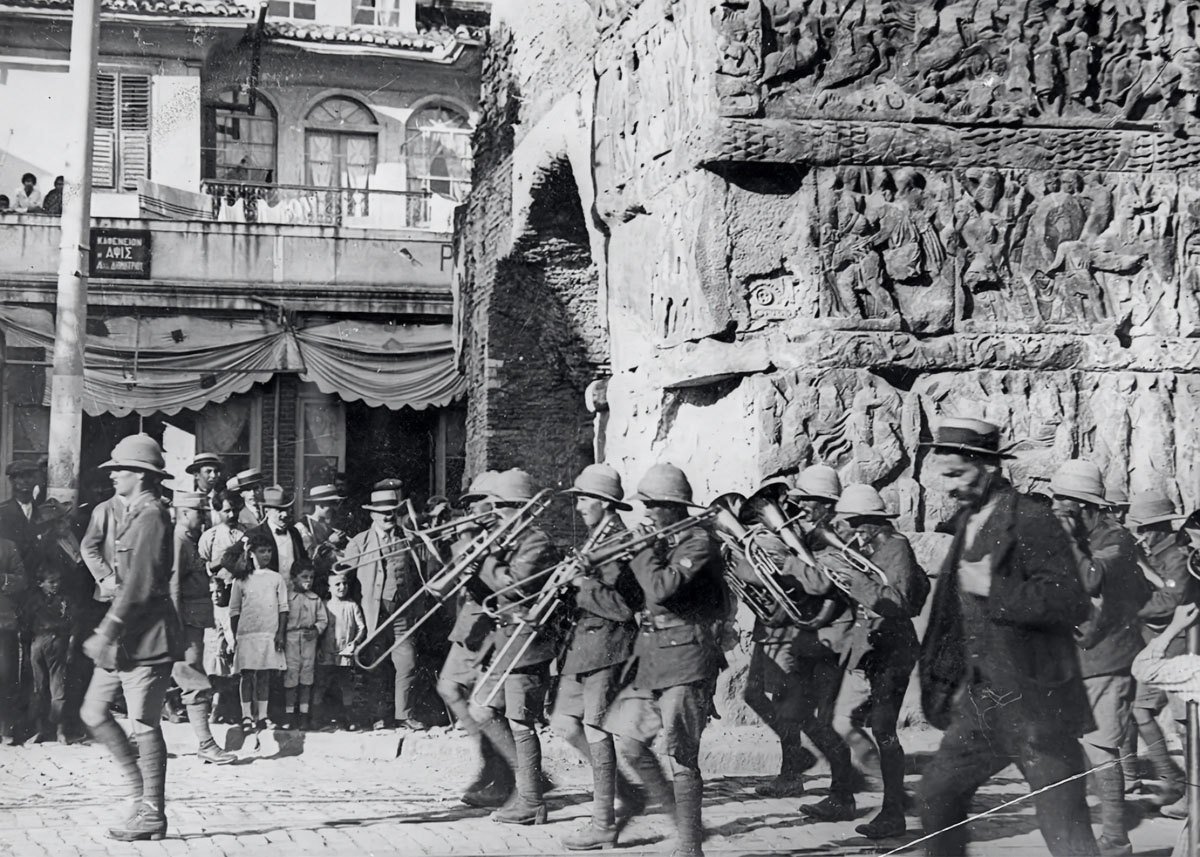
That quiet survival helped it last. By the time modern historians took notice, it had already endured centuries of change. Eventually, restoration efforts began. In the 1990s, parts of the arch were cleaned and treated to slow down the damage. The fence went up. The monument was recognized again, studied, stabilized, and protected.
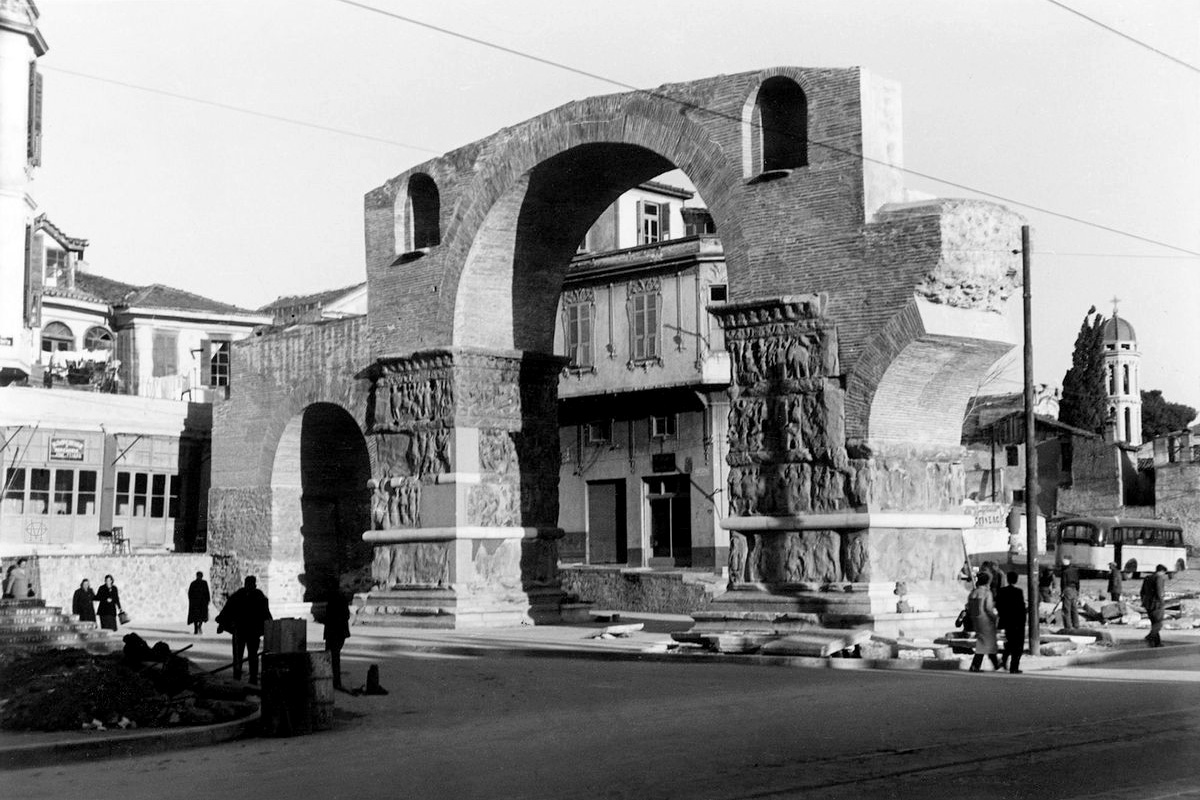
But Kamara didn’t become a museum piece. It still feels open and lived-in. Young people still gather nearby with paper cups of coffee in hand. Sometimes it’s quiet—just a meeting spot before class or a walk—but it’s also been the starting point for demonstrations, football fan gatherings, or spontaneous parades. Just up a nearby alley, there used to be a small bakery that opened early in the morning to supply koulouri vendors. After a night out, people heading home would stop by for something warm, tired, chatting, and slowly waking up with Kamara just behind them like it’s always been.
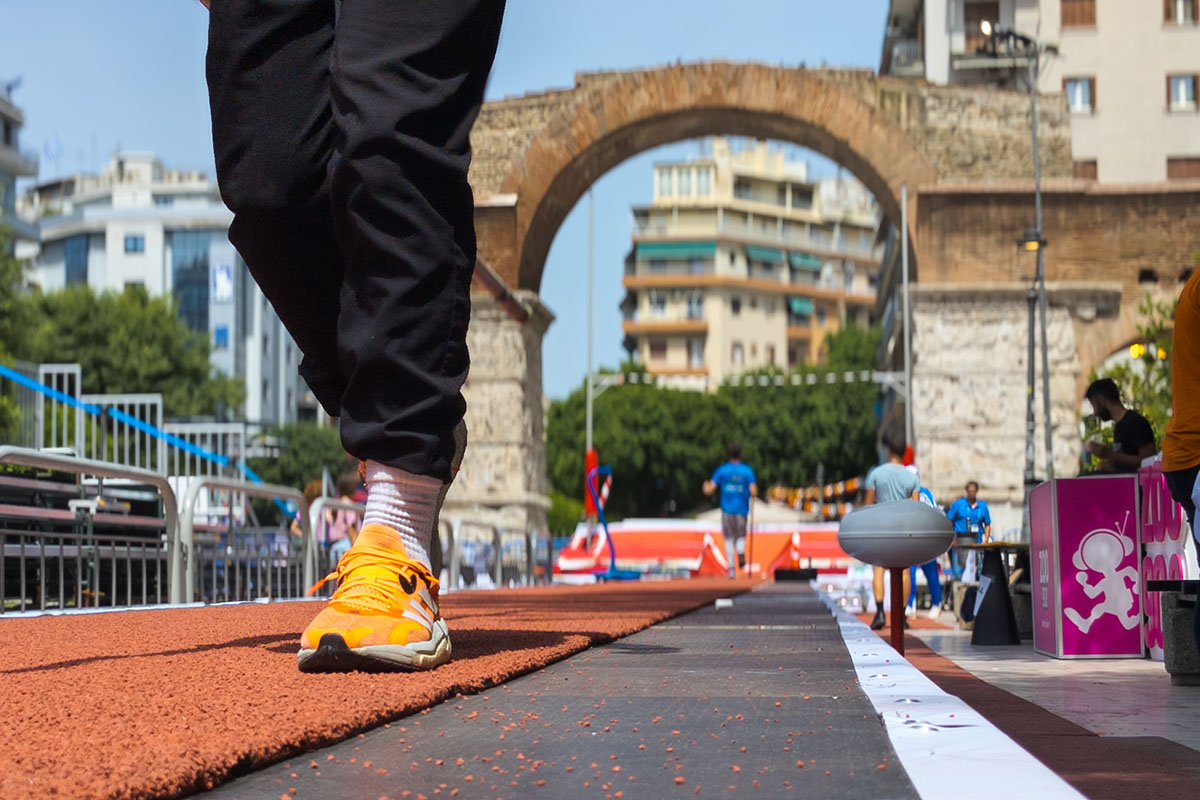
Even in the 1930s, life revolved around it. Candle sellers set up at its base. In the late 1950s, the surrounding space opened up, buildings were pulled back, and the arch began its new role, not just as a backdrop to the city, but as something cared for again. Somehow, through every decade, it stayed right where it was—absorbing the rhythm of whatever era surrounded it.
And maybe that’s what’s special about it. Kamara is ancient, but not distant. It’s survived not because it demanded attention, but because it stayed part of the city—quietly present, through every shift in time. It doesn’t ask for attention—but in Thessaloniki, it still gets it.
This article was written by Vasiliki Eleftheriou, a professional photographer and educator based in Thessaloniki. As the founder of Photoglobe, a photography school offering courses and seminars both in person and online, she inspires many aspiring photographers to develop their skills and artistic vision. Passionate about capturing human stories, her work blends photojournalism with portraiture, and she has participated in documentary projects that highlight everyday life and social issues.
